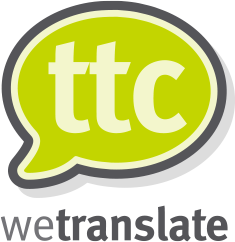 Packaging plays such an important role in the consumer’s purchasing decisions.
Packaging plays such an important role in the consumer’s purchasing decisions.
For this reason, companies spend a lot of time and money to get the packaging right for their products. This is absolutely essential in order to get the customer’s attention. However, unintentionally getting it wrong can result in painful consequences. Time and money can be saved by simply putting a planning stage in place which will help avoiding the mistakes listed below.
1 – Colours on the packaging clash with the local culture
Using the wrong colour for the target country can be disastrous for an otherwise good product. For example, some colours are associated with death in some cultures or certain colours may have a religious significance. Packaging colours need to be chosen carefully and should be neutral when possible in order to keep costs down.
2 – Choosing photographs unwisely
Photographs can help tremendously to increase a product’s appeal. However, if the photos or graphics used are not in line with the target country’s traditions or consumer expectations, photos that were meant to help can be a problem for your marketing campaign. Therefore, photos and graphics need to be taken into account at the design stage when it is cheaper to resolve any issues that are identified.
3 – Making the typesetting process unnecessarily complicated
It makes sense to get as many different languages as possible onto the same packaging. This will save time and money. But, different languages, particularly right to left languages, require different skills and resources in order to get the information right.
Using a translation company equipped with a typesetting studio can be a simple and effective solution. They can make sure that all of the languages appear correctly on your packaging.
4 – Assuming that existing packaging will work in any country
Different countries may have different packaging requirements and restrictions. Therefore, packaging designed for your domestic market that complies with the local regulations may require modification for other countries. The relative costs and time required to do this needs to be taken into account at the planning stage.
Failing to conform to the target country’s regulations may result in delays and, in some cases, in product recalls.
5 – Not briefing the designer about your international marketing angle
If your designer is not aware of your overseas requirements, they will not design the original artwork with an international mind-set. Using text integrated into graphics will mean extra cost and time as the graphic needs to be localised for each language.
For example, trying to avoid text going over double page spreads or complex graphic shapes with text running around them, will make right to left language formatting, such as Arabic and Hebrew, very easy since the direction of pages needs to be mirrored for these languages.
6 – Not allowing enough space for other languages
Text for some languages will take up more space than English text. For example, a German translation will contain approximately 20% more characters than English. If there is not enough space, then a small size type may have to be used, or the design may need to be modified.
7 – Using product names with adverse meanings in other languages
A global brand name check should be the first step before deciding on the product name and packaging slogan. Make sure that the brand name and product taglines do not have any adverse meanings in different languages.
This may sound difficult, but actually any reputable translation company can carry out a multilingual brand name check and provide a cost effective and painless solution to meet your needs.
None of the above mistakes need to occur. Forward planning and working with the right translation company can help you overcome all of the above pitfalls before they become major issues for your product.
We are here to help our customers and provide them with support and information so that they can carry out their activities without costly delays and product recalls.
If you have any questions regarding to any of the above or would like to discuss your translation project, please contact me by email levent@ttcwetranslate.com or call +44 (0)1245 216930.

